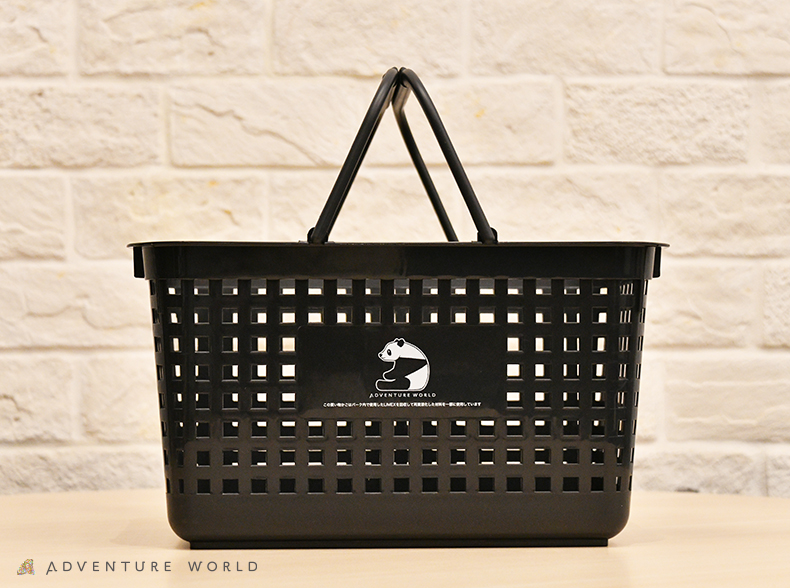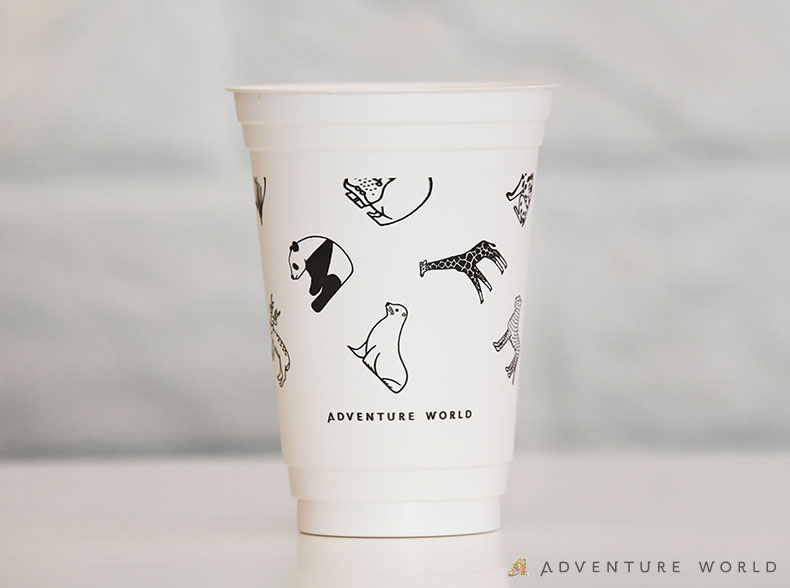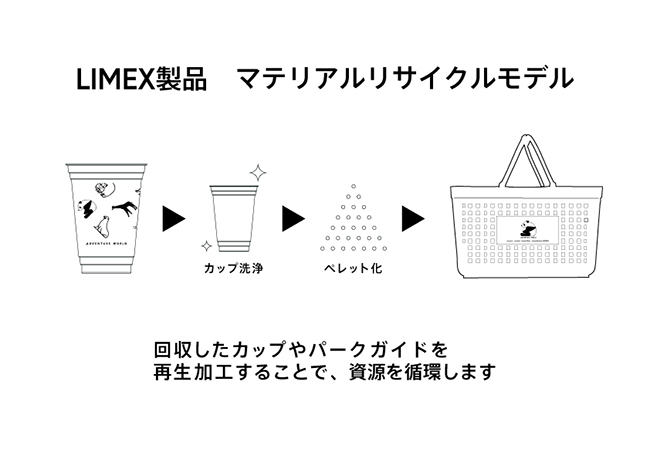- HOME
- Topics.
- Aiming for a zero-waste (recycling-oriented) park, we have started operating "shopping baskets" and "hangers" made of material recycled from used LIMEX beverage cups in the park.
Aiming for a zero-waste (recycling-oriented) park, we have started operating "shopping baskets" and "hangers" made of material recycled from used LIMEX beverage cups in the park.

Adventure World aims to be a zero-waste (recycling-oriented) park where nature and resources are recycled in accordance with the SDG Declaration and Park Policy. (CEO: Mr. Atsuyoshi Yamazaki), we have introduced LIMEX beverage cups and park guides made mainly from inorganic materials such as limestone. In addition to the first batch of trays for use in the Park, which will be introduced in 2022, the second batch, "shopping baskets" for use in some of the Park's gift stores and "hangers" for display and sale of clothing, will be introduced in 2025. The second phase, "shopping baskets" used in some gift shops in the Park, and "hangers" for displaying and selling clothes, began operation on August 8, 2025 (Friday). Hangers are also available at gift stores in the Park.
Operation of material-recycled shopping baskets and hangers】
■Start August 8, 2025 (Fri.)~
■Quantity/place of use
・About 500 shopping baskets / AW and Symbiosis 2 gift stores in the Park
・About 200 hangers / AW and Symbiosis Ocean Grotto gift stores in the Park ・About 200 hangers / AW and Symbiosis Ocean Grotto gift stores in the Park About 200 hangers / Gift Shops AW, Symbiosis, Ocean Grotto 3 stores Used also when opening outside stores
[Effects of the introduction of LIMEX beverage cups]
We have replaced all plastic beverage cups used at Adventure World, 220,000 pieces (2.32 tons) per year, with LIMEX cups from August 2022.
The changeover to LIMEX beverage cups will reduce the use of petroleum-based plastics by more than 930 kg (a reduction ratio of more than 40%) and will significantly reduce CO2 emissions from raw material procurement to manufacturing and disposal.

About the realization of the LIMEX material recycling model ]
We aim to realize a material recycling model that includes LIMEX cups and park guides made of LIMEX sheets.
Used LIMEX products will be sorted, collected and cleaned with the cooperation of guests.
The collected LIMEX products will be pelletized by TBM Corporation and transformed into material-recycled products.
By visualizing the material recycling model and allowing guests to actually experience it, the event will also serve as an educational activity to promote the realization of an environmentally friendly, recycling-oriented society.
The "shopping baskets" used in the park's gift stores are made from recycled LIMEX cups. About 30% of the "shopping baskets" are made of recycled materials.

Features of LIMEX Beverage Cups]
Feature 1: Reduced Plastic Use and CO2 Emissions
LIMEX beverage cups use less plastic than petroleum-based plastic beverage cups, resulting in lower CO2 emissions.
Feature 2:Reduction of water and forest resource use
LIMEX beverage cups use almost no water and require no wood pulp during production compared to paper beverage cups, thus contributing to the conservation of natural resources at risk of depletion.
Feature 3: Material Recyclable
LIMEX beverage cups can be collected and recycled. They can be recycled into a variety of products, such as daily necessities and logistics materials.
~About LIMEX ~
LIMEX is an inorganic filler-dispersion composite material containing more than 50% inorganic materials such as calcium carbonate (*). Since the main raw material is limestone, LIMEX can contribute to the conservation of resources at high risk of depletion, such as oil, water and forest resources used in the manufacture of plastic and paper substitute products. It has already been adopted by more than 10,000 companies and municipalities, and has been patented in more than 50 countries around the world and introduced at international conferences such as COP and G20.
The JSA standard issued by the Japanese Standards Association defines it as "inorganic-organic composite material consisting mainly of inorganic components (JSA-S1008).

